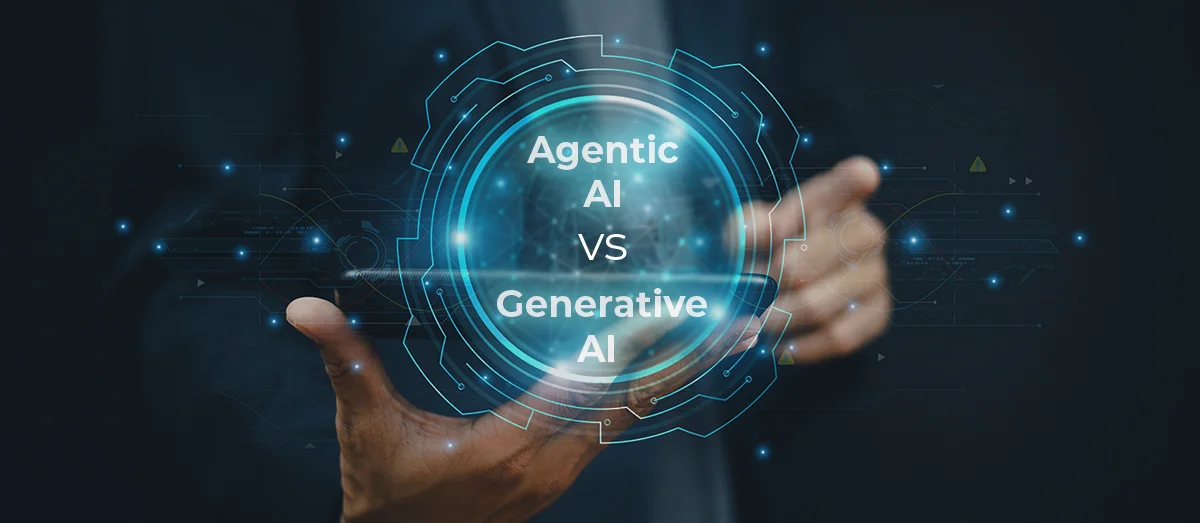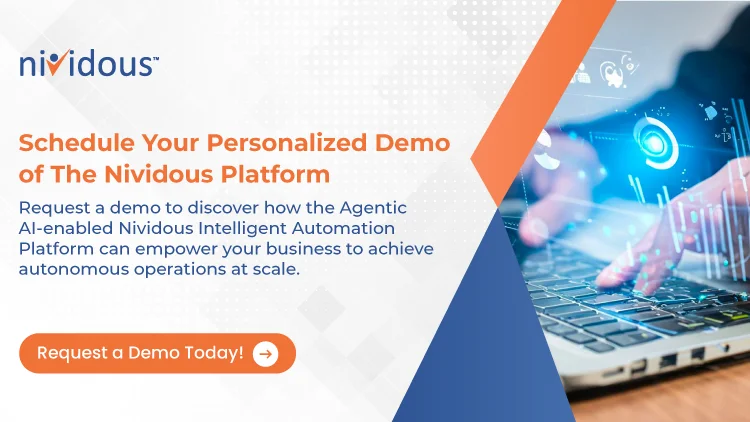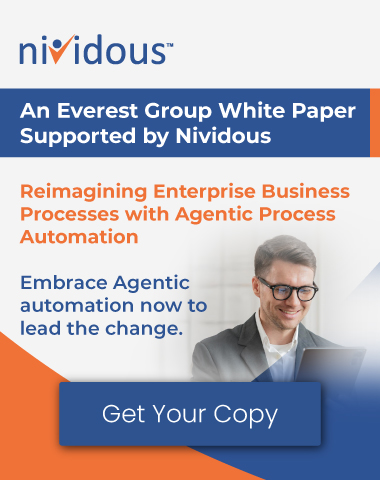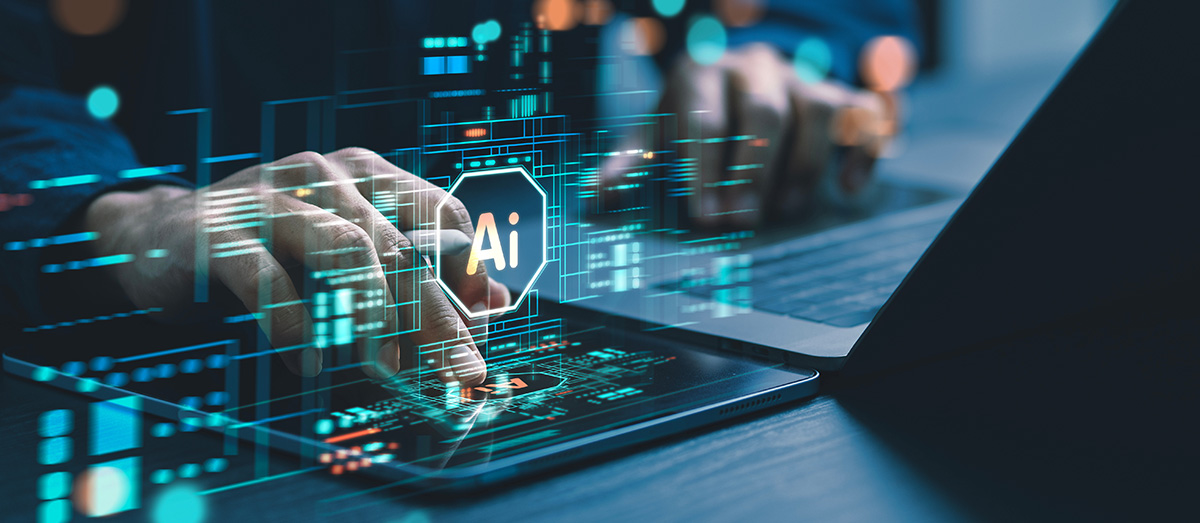Artificial Intelligence (AI) is evolving rapidly, bringing about transformative changes across industries. Two prominent branches of AI, Agentic AI and Generative AI, are often discussed, but understanding their distinct capabilities is crucial. This blog post will explore the key differences between these technologies, their applications, and their potential to revolutionize business operations.
Both Agentic AI and Generative AI are powerful subsets of artificial intelligence, but they operate on fundamentally different principles. While Generative AI creates content in response to prompts, Agentic AI acts autonomously to accomplish objectives by perceiving its environment and executing complex tasks. Imagine asking AI to write a report (Generative AI) versus assigning it to research, organize, and complete a project independently (Agentic AI). Understanding this distinction is key to leveraging their unique strengths effectively within your business.
What is Agentic AI?
Agentic AI refers to AI systems designed to act autonomously, perceiving their environment, setting goals, and executing tasks with minimal human intervention. Unlike Generative AI, which primarily responds to prompts by generating outputs, Agentic AI proactively works towards achieving predefined objectives. Think of it as a digital “agent” that can plan, execute, and monitor its progress to reach a desired outcome.
Key characteristics that define Agentic AI include:
- Autonomy: Operates independently without constant human input, making decisions and taking actions independently.
- Goal-Oriented: Focused on achieving specific, predefined objectives, often breaking down complex goals into manageable sub-tasks.
- Interactivity: Possesses the ability to interact with its environment (digital or physical) and adapt its actions based on real-time feedback.
- Decision-Making: Capable of making informed choices to achieve its goals, often weighing different options and anticipating consequences.
- Planning: Develops strategies and sequences of actions to reach its objectives efficiently.
- Execution: Carries out the planned actions, often utilizing various tools or integrating with existing systems.
- Monitoring & Iteration: Continuously observes its progress, learns from outcomes, and refines its approach to improve performance.
Are You Ready for the Shift from Generative to Agentic AI?
Learn how autonomous AI is transforming enterprise automation. Also, discover how Generative AI and Agentic AI, together, help organizations achieve truly autonomous, value-driven operations.
What is Generative AI?
Generative AI, on the other hand, focuses on creating new content, such as text, images, audio, video, and even code, that is often indistinguishable from human-created content. It learns from massive datasets of existing information to identify patterns, styles, and structures and then uses this understanding to generate novel outputs based on specific prompts or instructions.
Key features that define Generative AI include:
- Content Creation: Its primary function is to generate diverse new data forms, providing a powerful tool for creative and communication tasks.
- Data-Driven Learning: It learns by analyzing and processing vast amounts of existing data, allowing it to understand context, style, and coherence.
- Reactive Nature: It primarily responds to specific prompts or inputs a user provides, acting as a sophisticated content generator.
- Adaptability: While reactive, it can adapt its outputs based on user feedback or further refinement of prompts, leading to iterative improvements.
- Personalization: Capable of generating personalized content, recommendations, and experiences tailored to individual user preferences or needs.
Discover how to apply Generative AI to your business in this on-demand webinar.
Learn how Generative AI transforms industries by driving innovation, reducing costs, and enhancing customer experiences.
What are the Key Differences Between Agentic AI and Generative AI?
While Agentic AI and Generative AI are powerful tools, their core functionalities and applications differ significantly. Here’s a breakdown of their key distinctions:
| Feature | Agentic AI | Generative AI |
| Primary Goal | Autonomous action and task completion | Creation of new content (text, images, code, etc.) |
| Modus Operandi | Proactive, goal-driven, decision-making, planning, execution | Reactive, prompt-driven, pattern recognition, generation |
| Output | Actions, completed tasks, achieved objectives | New content (e.g., articles, images, songs, code) |
| Interaction | Interacts with the environment to achieve goals | Primarily interacts via prompts to produce outputs |
| Autonomy Level | High: can operate independently to achieve complex goals | Moderate: requires human prompts to initiate content creation |
| Problem-Solving | Solves problems by taking action and adapting strategies | Solves problems by generating creative solutions or content |
| Complexity | Handles multi-step, iterative processes and dynamic environments | Focuses on generating diverse outputs based on learned patterns |
Curious how agentic AI goes beyond generative AI?
Download agentic process automation white paper, to explore how autonomous AI agents drive measurable outcomes through intelligent, goal-oriented automation.
What are the Use Cases for Agentic AI and Generative AI?
Both technologies offer immense value across various business functions.
1. Logistics: Supply Chain Optimization & Disruptions
Agentic AI Application: An Agentic AI system can continuously monitor global logistics conditions (traffic, weather, port congestion, political instability, raw material availability). When supply chain disruptions occur, it can automatically reroute shipments, adjust schedules, and even find alternative suppliers, all without human intervention.
Benefits:
- Minimizes delays
- Reduces operational costs
- Maintains supply chain continuity in volatile environments by enabling rapid, autonomous adaptation
Generative AI Application: After an incident (e.g., a cargo delay, vehicle breakdown, or weather-related disruption), Generative AI can automatically synthesize data from various sources (sensor data, driver logs, traffic reports) to create detailed incident reports. It can also generate summaries of potential future disruptions based on current trends and historical data, offering predictive insights to human planners.
Benefits:
- Accelerates documentation
- Provides clear communication
- Enhances foresight for proactive mitigation strategies
2. Healthcare: Administrative Burden & Patient Experience
Agentic AI Application: AAI can manage a patient’s entire administrative journey: scheduling appointments based on physician availability and patient preferences, sending automated reminders, processing pre-admission paperwork, coordinating lab tests, and managing follow-up visits. It can also autonomously trigger referrals to specialists if initial assessments indicate a need, ensuring a seamless flow.
Benefits:
- Significantly reduces administrative workload for staff
- Minimizes patient wait times
- Improves adherence to care plans
- Enhances the overall patient experience
Generative AI Application: Based on a patient’s diagnosis and treatment plan, Generative AI can create personalized educational materials (e.g., simplified explanations of medical conditions, tailored instructions for medication, recovery guidelines, or dietary advice) that are easy to understand and address specific patient concerns. It can also generate empathetic responses to common patient inquiries via chatbots or virtual assistants.
Benefits:
- Improves patient understanding and engagement
- Reduces readmissions due to lack of information
- Frees medical professionals from repetitive explanations
3. Manufacturing: Production Efficiency & Quality Control
Agentic AI Application: AAI monitors real-time data from various sensors on a production line (e.g., robotic arms, CNC machines, vision systems). Suppose it detects a deviation from quality standards or a bottleneck. In that case, it autonomously adjusts machine parameters (e.g., speed, temperature, pressure), re-sequences tasks, or even re-calibrates equipment to maintain optimal production efficiency and product quality without human intervention.
Benefits:
- Reduces waste
- Improves product consistency
- Increases throughput
- Minimizes the need for manual adjustments, leading to higher efficiency
Generative AI Application: When a product defect is identified (e.g., via a vision inspection system), Generative AI can synthesize visual data, sensor readings, and production logs to generate a comprehensive report outlining the nature of the defect, potential root causes, and even suggest corrective actions or design modifications.
Benefits:
- Accelerates defect identification and analysis
- Streamlines problem-solving
- Aids in continuous improvement cycles for product quality
4. Banking & Finance: Fraud Detection & Risk Management
Agentic AI Application: The AAI system monitors real-time financial transactions and customer behavior. Upon detecting suspicious patterns, it autonomously takes immediate action: freezing accounts, blocking transactions, alerting relevant authorities, and initiating internal investigations, all while documenting each step. It can also adapt its detection algorithms based on new fraud schemes it identifies.
Benefits:
- Minimizes financial losses due to fraud
- Enhances security
- Ensures rapid response to emerging threats without human delay
Generative AI Application: For confirmed fraud cases, Generative AI can synthesize complex data from various sources (transaction histories, login attempts, IP addresses, communication logs) to automatically generate comprehensive narrative reports for investigators, including timelines, summaries of suspicious activities, and identified linkages, facilitating a faster and more thorough investigation.
Benefits:
- Accelerates investigation processes
- Provides clear and concise documentation for regulatory compliance
- Reduces manual reporting effort
Agentic AI Advancements and Trends
- Self-Improving Agents: The development of AI agents that can learn from their successes and failures, continuously refining their strategies and capabilities.
- Multi-Agent Systems: Creating environments where multiple AI agents collaborate to solve complex problems, mimicking human teams.
- Human-Agent Teaming: Focus on seamless collaboration between human operators and AI agents, each leveraging the other’s strengths.
- Explainable Agentic AI (XAI): Efforts to make Agentic AI’s decision-making processes more transparent and understandable to humans, fostering trust and accountability.
- Integration with IoT and Robotics: Expanding Agentic AI’s capabilities to control physical systems and devices in real-world environments.
Generative AI Advancements and Trends
- Multimodal Generation: The ability of Generative AI to create content across different modalities simultaneously (e.g., generating video from text prompts or images with accompanying audio).
- Foundation Models (Large Language Models): Continued scaling of models like GPT-4, leading to more sophisticated understanding and generation of text, code, and more.
- Personalized and Adaptive Generation: Generative AI tailors content to specific user preferences and contexts in real time.
- Ethical AI and Bias Mitigation: Growing focus on addressing biases in training data and ensuring the responsible and ethical use of generative models.
- Real-time Generation: Advancements allow for near-instantaneous content generation, which is critical for applications like live customer service or dynamic content delivery.
The Convergence of Intelligence and Action: The Future of Business Automation
As we have explored throughout this article, Agentic AI and Generative AI represent two powerful, complementary forces reshaping the business landscape. While Generative AI has already demonstrated its value in content creation, data analysis, and customer engagement, Agentic AI is now emerging as the next frontier. One that brings autonomous decision-making and proactive problem-solving to organizations ready to embrace true intelligent automation.
The Power of Integration
The most forward-thinking organizations are not choosing between technologies; they are strategically combining them. Imagine customer service agents that not only generate personalized responses (Generative AI) but also proactively identify and resolve account issues before customers even notice them (Agentic AI). Or consider supply chains that not only produce detailed disruption reports but autonomously reconfigure themselves to maintain business continuity during crises.
From Automation to Autonomy
At Nividous, we’ve witnessed firsthand how this evolution from simple automation to true autonomy transforms businesses. Our platform strategically integrates these complementary AI capabilities, combining RPA for task execution, native AI and ML for intelligent decision-making, and both Generative and Agentic AI capabilities within a unified ecosystem. This holistic approach helps organizations transcend traditional automation limitations to achieve truly autonomous, value-driven operations.
Your Competitive Advantage
Organizations that successfully implement both Agentic and Generative AI gain a triple advantage:
- Operational Excellence: Autonomous systems that continuously optimize themselves
- Strategic Agility: The ability to adapt to market changes with minimal human intervention
- Innovation Capacity: Freeing human talent to focus on creativity and strategic initiatives
The gap between early adopters and laggards in this technology will likely define competitive landscapes across industries in the coming years. The question isn’t whether these technologies will transform your industry, but whether you’ll be leading that transformation or reacting to it.
Begin Your Intelligent Automation Journey
Whether you’re just beginning to explore AI capabilities or looking to advance your existing automation initiatives, Nividous offers expertise and solutions tailored to your specific business challenges. Our team helps assess your organization’s unique opportunities, identify high-value use cases, and design implementation roadmaps that deliver measurable results.






